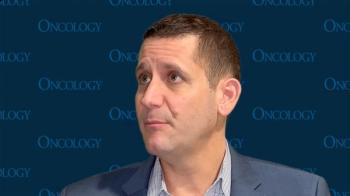
Geriatric Assessment Finds Older and Younger Adults With PTCL Had Similar Outcomes
Tetiana Skrypets, MD, highlighted that older adults with PTCL may be treated as younger adults if they pass the geriatric assessment.
During the
The trial did not find any clinical differences in the cohort of patients aged 65 to 74 years and the cohort of patients 75 years or older, which investigators determined could mean the groups had biologically similar disease. The median follow-up was 40.3 months (95% CI, 36.7-43.8), the 2-year overall survival was 44.8%, and the 5-year overall survival was 33.8%. For the same time points, the progression-free survival were 28.1% and 21.5%, respectively.
Overall, Skrypets, a clinical research physician at the Istituto Tumori Giovanni Paolo II in Bari, Italy, noted that with these results, she hopes to create a geriatric assessment for this group of patients.
Transcript:
We have to evaluate these patients better than we’re doing now, because we have these limits, like age. [Many] colleagues think that when a patient is 65 or more years old, the approach [used] is for elderly patients, but not all elderly patients, even at the age of 70 or 75 years old, are the same. Some of them could be treated in a more aggressive way. For some of them, we still have to think about the autologous transplant approach as a consolidation therapy after the frontline therapy. We also need some geriatric assessment, like it was done for B-cell lymphomas by the Italian group, published by Dr Merli and Dr Luminari. The name is EPI [Elderly Prognostic Index] score.2 In the future, with this cohort of patients, we will be able to produce a particular geriatric assessment for this group of patients.
References
- Skrypets T, Conte L, Alpdogan, et al. Peripheral T-cell lymphoma in the elderly: report on 922 patients from the T-Cell Project 1.0 and 2.0. Presented at: European Hematology Association 2025 Congress; June 12-15, 2025; Milan, Italy. Abstract 19.
- Merli F, Luminari S, Tucci A, et al. Simplified geriatric assessment in older patients with diffuse large B-cell lymphoma: the prospective elderly project of the Fondazione Italiana Linfomi. J Clin Oncol. 2021;39(11):1214-1222. doi:10.1200/JCO.20.02465
Newsletter
Stay up to date on recent advances in the multidisciplinary approach to cancer.

















































































